Materials Day 2024
C3, The Chaotic Career of Campbell
October 10 to 11, 2024
Please join us as we celebrate the contributions of Dr. David K. Campbell, Professor of Physics, Electrical & Computer Engineering, and Materials Science & Engineering and University Provost (2005-2010), to the Boston University College of Engineering and College of Arts and Sciences — and to the field of nonlinear science and novel electronic materials at large.
Livestream Video
10/10
10/11
Biography: the Chaotic Career of Campbell
The Chaotic Career of Campbell
To spare the organizers the need for endless introductions, we summarize here the trajectory followed by David Campbell in his chaotic career. Here we are interpreting “career” in a broad sense, so we will include his administrative roles as well as his research (and perhaps a few anecdotes)!.
David was born in Long Beach, California on July 23, 1944. He attended elementary school, junior high, and high school there, graduating in 1962 from Long Beach Polytechnic High School. Perhaps his major claim to fame during this period was that he was enrolled in the same schools as, and was a good friend of, and played sports with, Billie Jean Moffitt, later better known as Billie Jean King. He even took tennis lessons from the same coach (Clyde Walker) who taught BJK. Obviously, the lessons didn’t stick (😉).
David’s education continued at Harvard (1962-1966) where he majored in chemistry and physics and then at Cambridge, under a Marshall Scholarship, where he received a PhD in theoretical physics from the Department of Applied Mathematics and Theoretical Physics (DAMTP) in 1970.
After finishing at Cambridge, David accepted an offer, clabbered together by David Pines, of an instructorship in Physics and a position in the Center for Advanced Study at the University of Illinois in Champaign-Urbana. He held this post from 1970-1972, when he went as a post-doc to the Institute for Advanced Study in Princeton, NJ , where he worked with Roger Dashen, from 1972-1974. In !974, he accepted the offer, arranged by Peter Carruthers, of the first J. R. Oppenheimer Post-doctoral fellowship at Los Alamos Scientific Laboratory, which he held from 1974-1977. In 1977, David became a member of the technical staff in the theoretical division at Los Alamos, a position he maintained until 1992. In 1980, David with several colleagues began planning an organized research group in “nonlinear science”, which effort led to the formation of the Center for Nonlinear Studies (CNLS) at Los Alamos in October 1980 and to the successful recruitment of Alwyn Scott to be the first Director of the Center. When Al left for Arizona in 1985, David was named Director of the CNLS, a position he held until 1992, when he returned to the UIUC as Head of the Physics Department. He remained at the UIUC until 2000, when he moved to Boston University as Dean of Engineering. In 2005, he became Provost of Boston University, a position he held until 2011. He then returned to the Physics Department where he is now a Professor Physics, Electrical and Computer Engineering, and Materials Science and Engineering.
In terms of research, David’s interests have journeyed widely over his career, but at the broadest level his research can be organized into two general themes: inherently nonlinear phenomena (call it “nonlinear science”) and many-body interactions in novel states of matter. During the workshop, you will hear from colleagues who have worked with David on projects in these two areas.
In the area of nonlinear science, David his studied nonlinear excitations in classical and quantum field theories and in condensed matter physics. He has explored the interactions of solitary waves is non-integrable models, the existence of “discrete breathers/intrinsic localized modes,” and the non-equilibrium behavior in classical nonlinear many-body systems. In the area of many-body interactions in novel states of matter, David has explored pion condensation in nuclear physics and astrophysics, competing ground states in strongly correlated electronic materials in reduced dimensions, graphene and related quasi-two-dimensional electronic membranes, and Bose-Einstein condensates. Again, you will hear much about this work from collaborators in the research.
In parallel to his own research David has been actively involved in developing, popularizing, and teaching about nonlinear science and novel states of matter. He is the founding Editor- in-Chief of the American Institute of Physics journal Chaos: An Interdisciplinary Journal of Nonlinear Science and is an Editor of Physics Reports, a review section of Physics Letters. With Cambridge University Press, he (with colleagues) authored “Nonlinear Science: An Interactive Mathematica Notebook.”
Amidst his chaotic career, there were many moments of personal calm and beauty. With his former wife, Ulrike, David had two wonderful children, Jean-Pierre and Micha. With his wife, pianist Claude Hobson Campbell, he shares the true joy of seven additional children—Alex, Jeremy, Nicki, Ollie, Gabe, Sophie, and Thea—as well as frequent moments of musical pleasure, ranging from the German Lieder of Schubert and Schumann to the Beatles and the Rolling Stones. On occasion, he has summoned the courage to share these songs in public (😉).
With all these preliminaries aside, please sit back and enjoy the presentations, technical and humorous (some hopefully both!), as we celebrate “The Chaotic Career of Campbell.”
Agendas
Day 1, Thursday, October 10, 2024
- Talks: 1:00PM
- Cocktail Hour: 5:35PM
- Banquet: 6:30-9:00PM
- Location: Photonics Center, 8 Saint Mary’s Street, Room 906, Boston MA 02215
1:00pm – 1:30pm: Registration
1:30pm – 1:45pm: Welcome: Dean ad interim Elise Morgan
1:45pm – 2:10pm: George Tsironis, University of Crete – The Wonderful Wizard of O. Z.
2:15pm – 2:40pm: Irving Bigio, Boston University – A Half-Century of Deep Friendship and Nonlinear Science
2:45pm – 3:10pm: Sergej Flach, Massey University of New Zealand – On breathers, thermalization, and FPUT – with David
3:10pm – 3:20pm: COFFEE BREAK
3:20pm – 3:45pm: Shan-Wen Tsai, University of California, Riverside – Clash of Titans and the rise of a minnow: the bond-order-wave and other intermediate phases
3:50pm – 4:15pm: Leon Glass, McGill University – V. I. Arnold, circle maps and cardiac arrhythmias. A 65-year-old story still being written
4:20pm – 4:45pm: Rajarshi Roy, University of Maryland – Chaos, Coherence and Communication
4:45pm – 4:55pm: BREAK
5:00pm – 5:25pm: Eduardo Fradkin, University of Illinois – Absence of chaos in my life as a theorist
5:25pm – 5:35pm: Closing Remarks: Provost Gloria Waters
5:35pm – 6:30pm: Cocktail Hour
6:30pm – 9:00pm: Banquet
Day 2, Friday, October 11, 2024
- Talks: 8:15AM – 4:05PM
- Location: Center for Computing & Data Sciences (CDS) Conference Center, 665 Commonwealth Avenue, 17th Floor, Boston MA 02215
8:15am – 8:50am: Breakfast & Registration
8:50am – 9:00am: Welcome
9:00am – 9:25am: Arianna Montorsi, Polytechnic University of Turin – Eta Pairs, from Order to Chaos
9:30am – 9:55am: Ka-Ming Tam, Louisiana State University – Quenching Dynamics of the Anderson-Hubbard Model
10:00am – 10:25am: Alan Newell, University of Arizona – Wave Turbulence. Chaos with Closure
10:25am – 10:40am: COFFEE BREAK
10:45am – 11:10am: Zenan Qi, Wells Fargo – The Beauty Of Chaos – Inspiration From Prof. Campbell’s Achievements
11:15am – 11:40am: Nahom Yirga, Boston University – Tensor Trains for Assessing the Role of Nonlinearities in Correlated Systems
11:40am – 1:00pm: LUNCH BUFFET
1:00pm – 1:25pm: Elizabeth Bradley, University of Colorado, Boulder – A trajectory of mentoring and friendship
1:30pm – 1:55pm: Predrag Cvitanović, Georgia Tech – A field theory of turbulence
2:00pm – 2:25pm: Charles Tresser – Transition to Chaos: Models and Models of Models
2:25pm – 2:40pm: COFFEE BREAK
2:40pm – 3:05pm: Gemunu Gunaratne, University of Houston – Gene Sequences and Chaos
3:10pm – 3:35pm: Robert Ecke, Los Alamos National Laboratory – Adventures with David Campbell at the Center for Nonlinear Studies
3:40pm – 4:05pm: Philip Phillips, University of Illinois – Conformal Invariance and Quantum Entanglement in the Strange Metal
4:05pm: Closing Remarks
Speakers
Irving Bigio, Boston University
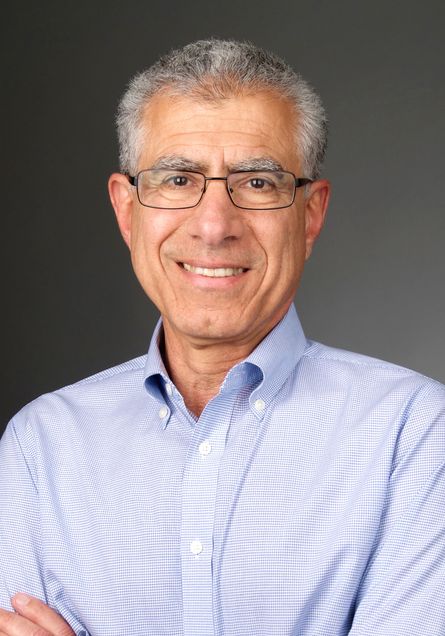 Professor (BME, ECE, Physics, Medicine), Website
Professor (BME, ECE, Physics, Medicine), Website
Title: A half-century of deep friendship and nonlinear science
Abstract: No one works or lives in a vacuum. David and I became friends when we first met as neighbors in Los Alamos in 1974, a friendship, both social and professional, that has deepened over the years, enriching my life and career. In science at Los Alamos, given my origins in nonlinear optics, David invited me to associate with the Center for Nonlinear Studies, and that led to interesting collaborations with other members and, eventually, to my interest in biomedical optics. In 2000, David recruited me to BU to build a program in that field, for which I will always be grateful.
Talk Time: 10/10 at 2:15PM
Elizabeth Bradley, University of Colorado Boulder
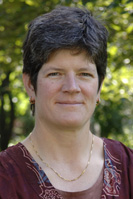 Professor, Website
Professor, Website
Title: A trajectory of mentoring and friendship
Abstract: David Campbell is part of the foundation of the field of nonlinear science: not only in terms of technical contributions, but also in his stewardship of the field, and of its people. I will share some of my own personal experiences regarding his mentorship and friendship.
Predrag Cvitanović, Georgia Tech
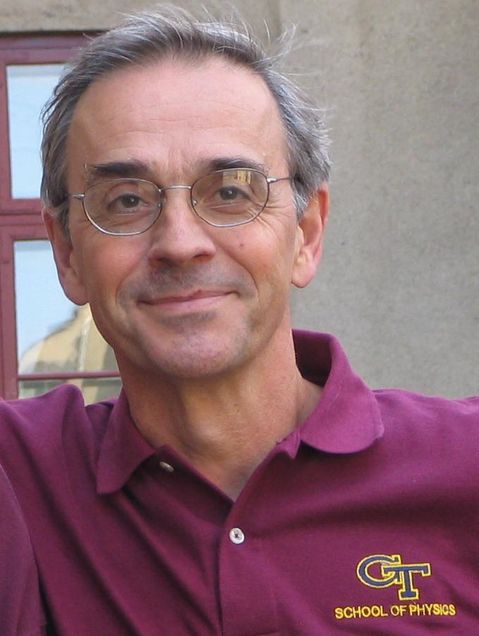 Professor of Physics, Website
Professor of Physics, Website
Title: A field theory of turbulence
Abstract: Gutzwiller semi-classical quantization, Boven-Sinai-Ruelle dynamical zeta functions for chaotic dynamical systems, statistical mechanics partition functions, and path integrals of quantum field theory are often presented in ways that make them appear as disjoint, unrelated theories. However, recent advances in describing fluid turbulence by its dynamical, deterministic Navier-Stokes underpinning, without any statistical assumptions, have led to a common field-theoretic description of both (low-dimension) chaotic dynamical systems, and (infinite-dimension) spatiotemporally turbulent flows.
Robert Ecke, Los Alamos National Laboratory
 Center for Nonlinear Studies, Website
Center for Nonlinear Studies, Website
Title: Adventures with David Campbell at the Center for Nonlinear Studies
Abstract: David Campbell was the dominant founder and driving force behind the Los Alamos National Laboratory Center for Nonlinear Studies (CNLS). He helped define nonlinear science in its emerging infancy in the early 1980s and set the standard of scientific excellence that has remained a hallmark of CNLS to this day. The early days at CNLS were marked by excitement, innovation, and more than a touch of irreverence. David was fundamentally responsible for my early career at Los Alamos and I will describe David’s impact on CNLS and on me in a way that hopefully lightens and enlightens. (1)
(1) Robert E. Ecke, “The Center for Nonlinear Studies: A personal history”, Chaos 34, 042102 (2024)
Sergej Flach, Institute for Basic Science
 Director, Center for Theoretical Physics of Complex Systems, Website
Director, Center for Theoretical Physics of Complex Systems, Website
Title: On breathers, thermalization, and FPUT – with David
Abstract: Shortly after the German unification materialized, the abstract prominent author name David Campbell materialized for me as well. I met David 30 years ago at a March meeting, and learned to know and value David ever since as a colleague and friend [1]. I enjoyed our team work when working on our first joint publication on discrete breathers [2] which turned rather influential judging by its number of citations. A decade later our joint passion for the intricate aspects of the Fermi-Past-Ulam-Tsingou (FPUT) paradox – which includes its exact breather- like periodic orbits – initiated a project to measure the equipartition time for the original FPUT trajectory. Ironically even nowadays CPUs will need at least years to figure the numbers, thus we did not arrive at an answer. Our attempt however was highly successful – in that it opened a completely new avenue of systematic exploration of thermalization of many body systems, in particular close to integrable limits [3,4]. With our FPUT project being far from over, I look forward to more joint work with David!
Eduardo Fradkin, University of Illinois

Professor of Physics, Website
Title: Absence of chaos in my life as a theorist
Abstract: Since small perturbations would have greatly changed my trajectory I am not sure if the title is correct. Nevertheless I will pretend that with great foresight I had planned ahead my work as a theorist in spite of the fact that I cannot plan anything. With this perspective in mind I will describe my work at the intersection of Condensed matter Physics and Field Theory.
Leon Glass, McGill University
 Emeritus Professor of Physiology, Website
Emeritus Professor of Physiology, Website
Title: V. I. Arnold, circle maps and cardiac arrhythmias. A 65 year old story still being written.
Abstract: The journal CHAOS, founded in 1991 under the guidance of Editor-in-Chief David Campbell, has played a major role in helping to define and shape the interdisciplinary study of nonlinear dynamics in diverse systems. One of the original goals was to provide a medium to help overcome the major difficulties in communication between scientists in the USSR and the west. As David recounted in his 2015 editorial on “The pre-history of Chaos” [1], an article in the inaugural issue by V. I. Arnold on “Cardiac arrhythmias and circle mappings” [2] provided “a perfect instantiation of the need for the journal CHAOS”. As recollected by Arnold, his thesis adviser Kolmogorov, “asked me [Arnold] to omit from the paper on self-maps of the circle the section on applications to heartbeats, adding: ‘That is not one of the classical problems one ought to work on’ ’’ [3]. I will relate some of the details of the start of CHAOS and the publication of the Arnold article. I will briefly describe Arnold’s paper and show recent work from our group [4] that underscores the continued relevance of the simple models studied by Arnold to the analysis of complex dynamics in real systems.
Gemunu Gunaratne, University of Houston
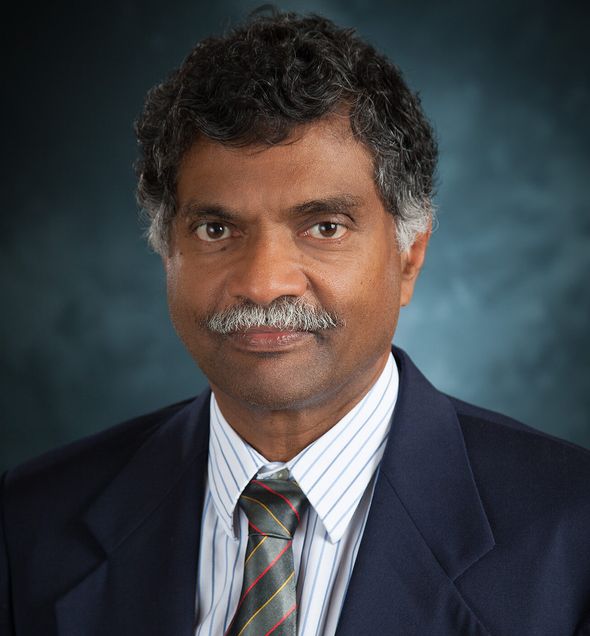 Moores Professor of Physics, Website
Moores Professor of Physics, Website
Title: Gene Sequences and Chaos
Abstract: Protein synthesis within cells consists of three primary steps: (1) transcription, where sections of the genome is copied creating pre-RNAs, (2) splicing, where over 95% of the pre-RNA is spliced away, and those retained segments joined to form messenger RNA (mRNA), which migrate outside the cell nucleus, and (3) translation, where proteins are synthesized from mRNA. Splicing is the least understood of these. It is believed to have led to the creation of higher organisms. However, it is also believed to cause over half of hereditary diseases including cancers, Parkinson’s and schizophrenia. We introduce a representation of genome sequences that maps each site of a genome sequence to a unique point in a unit plane. The resulting point-sets are amenable to tools developed in statistical mechanics and dynamical systems theory. The analyses unravel many differences between nucleic-acid sequences in different groups. They can also be used, through a machine learning algorithms, to differentiate individual sequences.
Arianna Montorsi, Polytechnic University of Turin
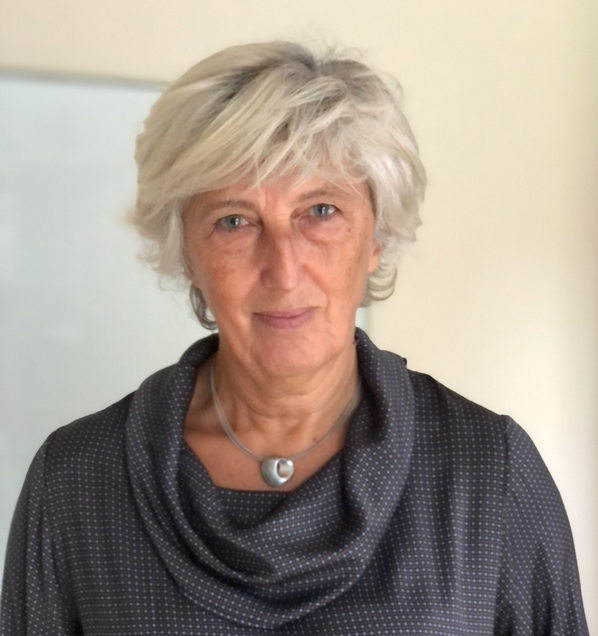 Tenured Associate Professor, Website
Tenured Associate Professor, Website
Title: Eta Pairs, from Order to Chaos
Abstract: In ref [1] David and I proved that a certain class of extended Hubbard models have eta pairs in their ground states, which are characterized by off diagonal long range order. More recently, in [2] it was noticed that these states also possess the defining features of scar states, which in chaotic systems are known to defeat ergodic theorem. We argue that David’s life, in constant equilibrium between order and chaos, is another realization of eta pairs.
Alan Newell, University of Arizona
 Professor of Mathematics, Website
Professor of Mathematics, Website
Title: Wave Turbulence. Chaos with Closure
Abstract: Feynman once said that turbulence was the last outstanding challenge of classical physics. And the sad fact is that for the last hundred years there has been little progress. The problem is one of closure. The BBGKY hierarchy of moment equations for nonlinear field equations is unclosed, and no consistent closure has yet been found. On the other hand, wave turbulence, the turbulence of a field of weakly nonlinear dispersive waves, has a natural asymptotic closure. It consists of a closed kinetic equation for the energy density which reveals the process by which energy is shared throughout the spectrum and linear equations for the leading order higher cumulants which are solved by simply renormalizing the frequency to depend on the energy density. Moreover, the kinetic equation has all the solutions one might expect, equipartition and finite flux solutions for the conserved densities. That is the good news. The not so good news, but good news for our younger colleagues, is that there still remain many open challenges which I will discuss.
Philip Phillips, University of Illinois
 Professor of Physics, Website
Professor of Physics, Website
Title: Conformal Invariance and Quantum Entanglement in the Strange Metal
Abstract: Precisely what is strange about the strange metal remains unresolved. I will show that the recently measured density-density response in the cuprate BSCCO fits a conformally invariant form up to an intermediate energy scale. Unlike marginal Fermi liquid theory, the cross-over scale is not set by temperature. Based on this conformal fit, I then compute the quantum Fisher information which tells us the number of entangled degrees of freedom. I obtain that the number of entangled degrees of freedom scales as the crossover scale raised to the conformal dimension. As the crossover scale is set by Mott physics and the conformal dimension by low-energy physics, this is a clear example of UV-IR mixing. I will discuss this phenomenon in the context of doped Mott physics, that is, Mottness.
Zenan Qi, Wells Fargo
 PhD Mechanical Engineering, BU, Website
PhD Mechanical Engineering, BU, Website
Title: The Beauty Of Chaos – Inspiration From Prof.Campbell’s Achievements
Abstract: As a student of Prof. Campbell, I am sincerely grateful for all the excellent guidance on research and beyond, which significantly impacted my career and life. From his remarkable and seemingly ‘chaotic’ research publications and achievements, I’d like to try seeking and unveiling a few observations that inspire me profoundly.
Rajarshi Roy, University of Maryland

Professor of Physics, Website
Title: Chaos, Coherence and Communication
Abstract: Encounters with chaos are commonplace in all our lives. But are there secret messages hidden in the chaos that surrounds us and often takes us on surprising trajectories in our careers? Looking for patterns and possible coherent aspects of chaos became possible with computers, both for numerical models and with data and images from nature and the laboratory. These have now become well established parts of life, art and science. I will reflect on some chaotic encounters with humans that have been a part of my life and made it specially enjoyable.
Ka-Ming Tam, Louisiana State University
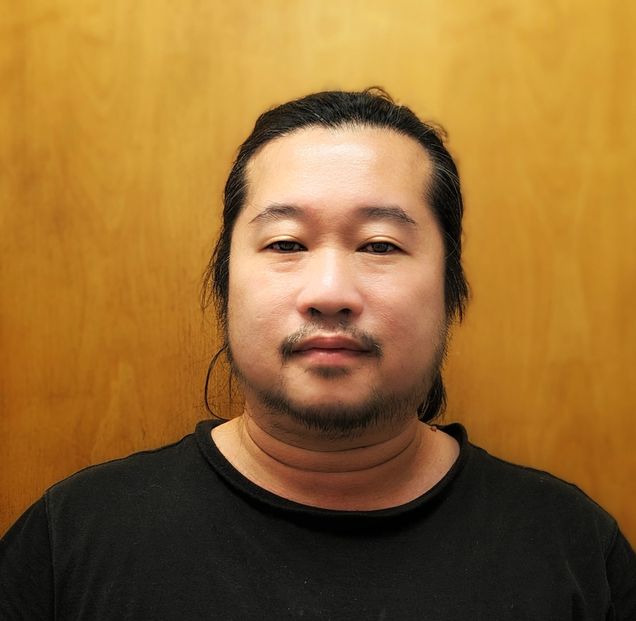 Research Assistant Professor of Physics & Astronomy, Website
Research Assistant Professor of Physics & Astronomy, Website
Title: Quenching Dynamics of the Anderson-Hubbard Model
Abstract: We introduce an extension of the non-equilibrium dynamical mean field theory to incorporate the effects of static random disorder in a many-particle system by integrating out different disorder configurations. We use this method to study the non-equilibrium transient dynamics of the Fermi-Hubbard model following an interaction and disorder quench. The method recovers the solution of the disorder-free case, for which the system exhibits qualitatively distinct dynamical behaviors in the weak-coupling (prethermalization) and strong-coupling regimes (collapse-and-revival oscillations). We find that weak random disorder promotes thermalization. In the weak-coupling regime, the jump in the quasiparticle weight in the prethermal regime is suppressed by random disorder, while in the strong-coupling regime, random disorder reduces the amplitude of the quasiparticle weight oscillations. We also discuss the effects of correlated disorder and non-local interaction.
Charles Tresser
 Title: Transition to Chaos: Models and Models of Models
Title: Transition to Chaos: Models and Models of Models
Abstract: Degree 1 circle maps provide a usual model of the transition to chaos. Since this is still hard to see globally, one can further model these models by considering piecewise affine circle maps that are smooth at all but 2 points. The study of these systems was focus of research by myself, Campbell, and a few others several years ago. Although much more is known about these systems today, there are still a number of interesting open questions.
Shan-Wen Tsai, University of California, Riveride
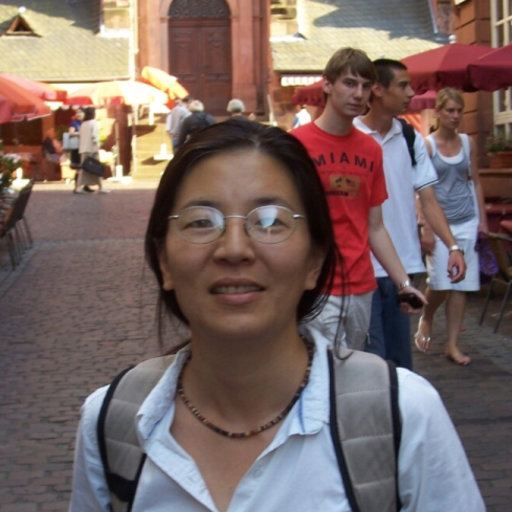
Professor of Physics & Astronomy, Website
Title: Clash of Titans and the rise of a minnow: the bond-order-wave and other intermediate phases
Abstract: In many-body systems, new phases of matter emerge due to the many interacting degrees of freedom. Different types of interaction may lead to phases with different long-range or quasi-long-range order that compete with each other, with a quantum phase transition occurring between them. In the one-dimensional fermionic spin-half extended Hubbard model at half-filling with repulsive on-site (U) and nearest-neighbor (V) interactions, large values of U favor a spin density-wave phase and large values of V favor a (s-wave) density-wave phase, but there is not always a direct transition between them. A new phase, with bond-order-wave (BOW) order, emerges for a certain range of intermediate values of U and V.
I will give an account of how I became interested in the BOW phase during my postdoc years at BU working with David, of our functional renormalization-group scheme that was able to capture this intermediate phase in the weak coupling limit, and other applications. I will also discuss recent studies of quantum materials and programmable Rydberg atom arrays where the clash between two robust orders — and also their cooperation — lead to rich emergent quantum intermediate phases that are inspired by our earlier work on the BOW phase.
George Tsironis, University of Crete
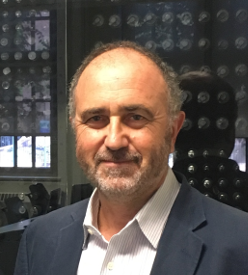 Professor of Physics, Website
Professor of Physics, Website
Title: The wonderful wizard of O. Z.
Abstract: This talk will focus on the wonderful wizard that makes us travel to the land of O.Z. and also discuss his own travels in space, time and creativity space. We will see how fractals, solitons and chaos shape modern science and how important results are derived in nonlinear physics and mathematics. We pay particular attention to the Discrete Nonlinear Schrödinger (DNLS) equation and discuss old and new results. We close by addressing the question as to whether Artificial Intelligence (AI) can give yet another strong push to the quantitative analysis of complex systems.
Nahom Yirga, Boston University
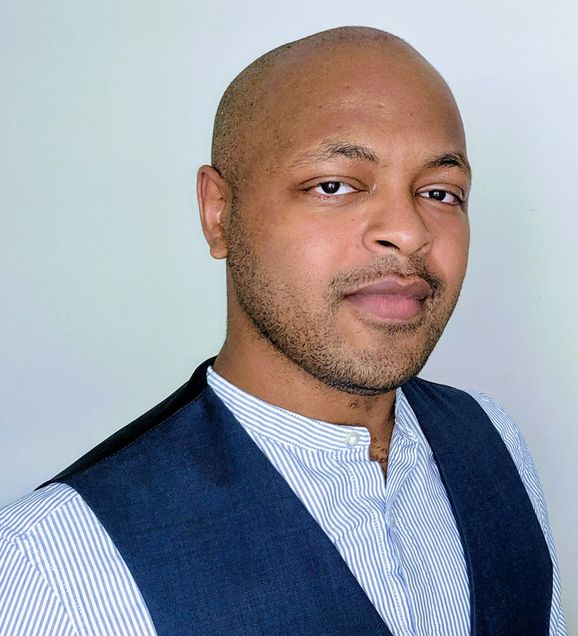 Visiting Researcher, Physics, Website
Visiting Researcher, Physics, Website
Title: Tensor Trains for Assessing the Role of Nonlinearities in Correlated Systems
Abstract: Computational studies of interactions and transport in correlated systems have been extremely fruitful in understanding the response and behavior of these systems. Such studies find that though the phase space of these systems are exponential, the relevant degrees of freedom often scale polynomially with system size allowing for a fast and efficient simulation. Tensor trains offer an adaptive framework for finding a low-rank decomposition of high dimensional systems. The decomposition offers unparalleled precision at low computational cost and allows for a dynamic separation of the degrees of freedom which enables the calculation of response across various scales. We elucidate the flexibility, scalability and cost of Tensor Trains by simulating models of polyacetylene and their respective response functions. In addition we consider excitations due to the electron-phonon interactions present in these systems.
Accessibility
Boston University strives to be accessible, inclusive and diverse in our facilities, programming and academic offerings. Your experience in this event is important to us. If you have a disability (including but not limited to learning or attention, mental health, concussion, vision, mobility, hearing, physical or other health related), require communication access services for the deaf or hard of hearing, or believe that you require a reasonable accommodation for another reason please contact Anya Blount (blounta@bu.edu), to discuss your needs. Please request accommodations by September 23.